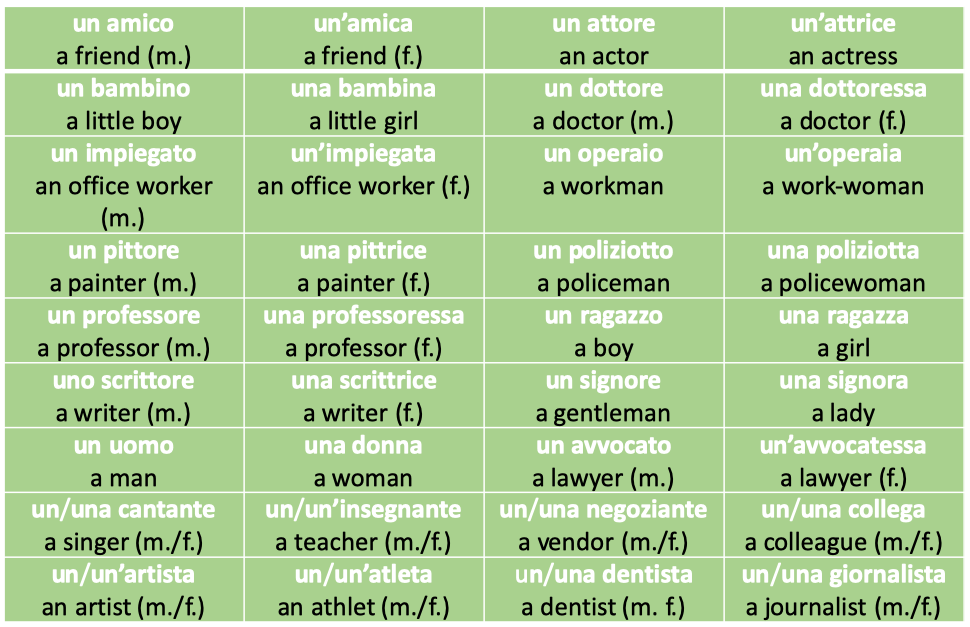He and she
| Listen to the following presentations.
Lui si chiama Antonio Mariotti Lei si chiama Emily Johnson |
- Lui / Lui si chiama… This is a fixed expression and it means Her / His name is…. You must memorize it as it is. Do not try to translate literally from English
- Come si chiama lui / lei? This is the equivalent of What’s his/ her name. If in English you can also ask ‘Who is he /she?‘ and obtain the name as the answer, the same you can do in Italian.
- The word e, as you know, means ‘and‘, but when it is written with an accent (è) it is the equivalent of the English is
- Lui / Lei è … is obviously the equivalent of the English She / He is… and like in English can also be used to say who he/she is: Lui è Antonio Mariotti (He is Antonio Mariotti), Lei è Emily Johnson (She is Emily Johnson)
- In Italian, the subject pronoun Lui/Lei, can be easily omitted
- È+ di + ‘name of a city or town’ indicates the city or town of origin (He/She is from…)
- Ha literally means he/she has and it used in Italian to express the age: Ha + ‘number’ + anni.
- Abita (He/She lives) and lavora (He/She works), insegna (He/She teaches).
- Cosa fa? What does he/she do? It is a generic question you ask what he or she does/is doing.
| Nouns Most nouns referring to classes or categories of people have two forms, one masculine, and one feminine. Other have only one form for both, and just the article in front of them (un, una, etc.) clarifies if the noun refers to a male or female. For practice on vocabulary and pronunciation, use Quizlet.  Note: The words signore and signora are also used for greeting people (see Unità 3). In this case, they are the equivalent of Mr./Sir and Mrs./Madam. They must always be written with a capital S and can be abbreviated Sig./ Sig.ra. Note: The words signore and signora are also used for greeting people (see Unità 3). In this case, they are the equivalent of Mr./Sir and Mrs./Madam. They must always be written with a capital S and can be abbreviated Sig./ Sig.ra. |
| GRAMMAR Chiamarsi, essere, avere, and regular verbs in -are: lui and lei forms You already know the forms for io and tu (see Unità 1).
You already know how to form the verb in -are for io and tu (see Unità 1). To obtain the forms for lui (he) and lei (she) simply drop -are, and add -a.
The indefinite articles
NOTE: sometimes the article is the only way to know the gender of a noun: un insegnante indicates a male teacher, while un’insegnante a female one. |
Tasks
|
Practice
Previous > U1 Reading passages, songs, video clips, etc.
Next > Descriviamo
